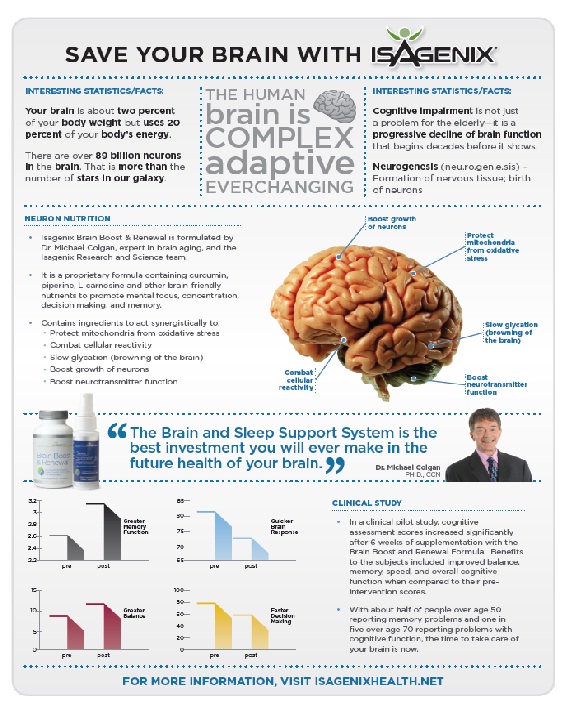The more I learn about health, the more it reminds me of wealth. In
fact, the Bible even puts these two together in III John 2, "Beloved, I
wish above all things that thou mayest prosper and be in health even as
thy soul prospers." These two aspects of our lives can either free us or
limit what we re able to accomplish, depending on our stewardship. It's
amazing how the same principles for success apply to both health and
wealth. Some of us have more experience, knowledge, and understanding in
one area than the other, so it's beneficial to look at the similarities
between the two in order to improve in both areas.
The first correlation to consider is that both health and wealth can
be damaged by simply doing nothing. What happens when you neglect your
health or your wealth? Let s say you spend your money with no regard for
a budget or your income-level. One day you may wake up and realize that
you re deep in debt. Now, let s apply that to health. What happens when
you eat with no regard for the effects on your body? One day you may
wake up and realize that you re sick and overweight. The good news is
that when you purposely begin to do the right things in either area,
you'll start to see short-term and long-term benefits. Here are some
principles for improvement that apply to both health and wealth.
First, evaluate your current position. Regarding health, evaluate
your current eating and exercise habits. What foods make up your diet?
Are you exercising regularly? Are you overweight? Regarding wealth,
evaluate your current spending habits. Are you spending more than you
earn? Where are you spending your money? Are you in debt?
Secondly, develop a plan. In the area of health, set out a plan for
stepping out of those bad eating and exercise habits. Some people call
this plan a diet, but you could think of it as a health budget. A budget
is a plan for purposely limiting some aspects of spending, or in this
case eating, so you will have what you need or want for another area.
For example, you could "pay yourself first" by eating a large
raw-vegetable salad at lunch and dinner before eating any cooked food.
This ensures that you re getting the most nutritious aspect of your meal
first and limits the space available for less nutritious foods.
In the area of wealth, set out a plan for stepping out of those bad
spending habits. Some people call this a budget, but you could think of
it as a money diet. Debt is the wealth equivalent of fat. When you find
yourself overweight, it basically means you have been ingesting more
calories than your body has been able to expend over a period of time.
Debt, especially credit card debt, is the result of spending more than
you earn over time. To "lose" debt, you must either spend less than you
earn, increase your income, or both. To "pay off" your fat, your caloric
intake must be less than your body expends, you must increase your
activity through exercise, or both.
Once you've evaluated your position and set out your plan, begin to
take the steps you've outlined. Don t try to make all the changes
overnight, but be consistent and be patient with yourself. For upgrading
your health, you might first choose to add more fruits and vegetables
and replace those junk-food snacks with fruit. After some success in
this area, proceed to your next step, perhaps choosing an exercise
activity that you enjoy and determining a timeslot that you can
maintain. For your financial situation, you might begin by curbing those
impulse spending sprees and refusing to go into debt over an
unnecessary purchase. Then, once you've evaluated each category of
expenditure for potential money savings, you can proceed to take the
steps you've found to reduce spending in those areas.
Next, ride the momentum and continue to step to higher levels. As you
re consistent with the changes you've determined to make, you'll find
new freedom which will motivate you to continue in your efforts. As your
health improves, those tight clothes will loosen up and you'll feel
better. As your financial situation improves, you'll begin to feel less
financial stress and those debts will begin to disappear. You'll find
that you're able to spend money on those smaller clothes you'll need,
now that, for example, your entertainment and debt budget categories
aren't consuming more than their fair shares of the cash.
Once you begin to gain control of your health and wealth, you should
continue to revise your goals to reach higher levels. For your health,
you could target new aspects of your eating habits, like sugar
consumption, and begin to add weight-lifting to your exercise routine.
For your finances, you could begin to set up a contingency fund, start
college funds for your children, and build your retirement investments.
Take time regularly to manage your health and your wealth. Once you
develop good habits and self-control, maintenance will just be a matter
of choosing to be a good steward in both areas. There s a saying in the
financial world that applies equally to health, "the longer term your
perspective, the better your decision will be." Let s begin to exercise
discipline now to invest in our future health and wealth.
Banishing the Deadliest Fat

The most dangerous form of body fat is intra-abdominal fat, or visceral fat, which contributes to total belly fat.
The excess adiposity (“fatness”) that exists in obese individuals is associated with serious adverse health effects including increased susceptibility to cardiovascular disease and type 2 diabetes. With obesity-related healthcare spending at about 5 to 10 percent of all health care costs, it’s a problem that clearly stresses an already unstable economy.
Obesity is a complex, dynamic process involving genes and hormones; however, the most amendable lifestyle factor is simply our excessive calorie consumption relative to our energy expenditure. Not surprisingly, according to a 2010 consumer survey, 55 percent of us are actively trying to lose weight. But to address the issues of prevention, treatment, and lifestyle factors, you need to understand body fat–what it is, what it does, and how different types of body fat are associated with health and disease.
Body Fat is an Active Endocrine Organ
Previously, body fat was thought to be just that: fat. However, scientists have known for some time that body fat is indeed no less an organ than the liver or kidney due to its metabolic activities, its target by hormones, and its ability to secrete cytokines—those proteins with hormone-like effects. Body fat comes directly from our diet. Foods contain varying levels of carbohydrates, proteins, and, of course, fat. Alcohol, too, provides potential energy, more than the other macronutrients except for fat, that contributes to body fat.
Now, when examining body fat and body composition, researchers have generally divided fat into either subcutaneous or visceral fat. Subcutaneous fat is fat accumulated in the lower body, often visualized as producing a “pear shaped” appearance. This body shape is more frequently associated with the adiposity of women. In contrast, visceral fat is the fat within your belly (not the fat hanging over your belt) and is associated with the “apple shaped” appearance observed more frequently in men. Visceral fat is also known as central or abdominal fat.
In general, visceral fat is a relatively small proportion of total body fat. Why is it so important? It is chiefly because, unlike subcutaneous fat, visceral fat bathes the liver, kidneys, pancreas, and other organs that are necessary for maintaining optimal health and wellness. Because of its proximity, this type of fat has serious implications on health.
Visceral Fat is Inflammatory
Visceral fat is deleterious to health also because it is metabolically very active, causing low-grade inflammation within the body. In obese individuals, visceral fat consists of fat cells (adipocytes) that stimulate and secrete a variety of potent chemicals as well as activating cellular pathways that are implicated in disease. For example, visceral fat can stimulate the production and release of adipokines such as tumor necrosis factor and interleukins, which are potent pro-inflammatory mediators. These molecules travel to both neighboring and distant cells stimulating recruitment of other cells, generating yet more pro-inflammatory mediators and causing a profound cascading event. Visceral fat accumulation is also associated with insulin resistance, which is a primary factor in type 2 diabetes and other obesity-related conditions. Adipocytes in visceral fat can also increase proteins that promote additional fat storage, a process known as adipogenesis. Visceral fat accumulation in the liver is also a precursor to much more serious liver problems such as scarring (cirrhosis), and even liver cancer. The cumulative effect of these pathophysiological events causes glucose impairment, increased triglycerides, altered lipoprotein balance, and high blood pressure—collectively comprising the metabolic syndrome, a hallmark for cardiovascular disease and type 2 diabetes among other associated health risks.
What Can Be Done to Reduce Visceral Fat?
Luckily, there are things that can be done to reduce visceral fat, but not without effort. First, the individual must lose weight. Exercise is certainly one of the most effective lifestyle interventions for reducing visceral fat. In one recent study, researchers found that aerobic exercise alone significantly reduced visceral fat by 12 percent (1). Next, loss of visceral fat requires modifications from a typical high fat, high-calorie consumption pattern.
Among nutrients targeted for assisting us in promoting fat loss are dietary fiber and protein. In fact, a recent study found that intake of soluble fiber was directly associated with reductions in visceral fat (2). Additionally, consumers of Isagenix products already know about the great features of our whey protein-based products such as IsaLean Shakes and IsaPro. Among the myriad of benefits of whey protein that will help individuals reduce their visceral fat include whey’s satiating properties, compared with carbohydrates, and its positive effects on metabolism. An increase in dietary protein also facilitates muscle protein synthesis, which has the additional benefit of stimulating body metabolism. Even better would be to incorporate the Isagenix Cleansing and Fat Burning System into an overall dietary strategy to metabolize visceral fat. In fact, a review of the literature by Krista Varady at the University of Illinois-Chicago has found that either daily caloric restriction or intermittent fasting reduces stubborn visceral fat by 5 to 15 percent (3). Since both the 30- and 9-day fat burning and nutritional cleansing systems feature aspects of caloric restriction and intermittent fasting it makes perfect sense that the Isagenix way would help reduce toxic, health-robbing visceral fat.























